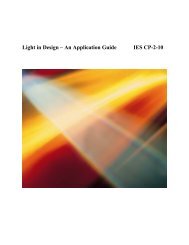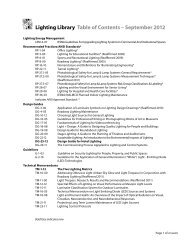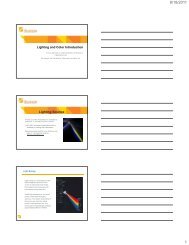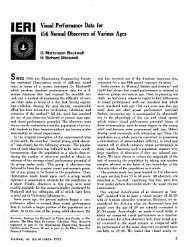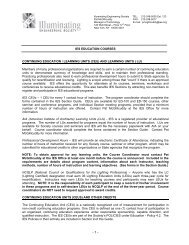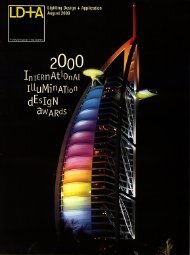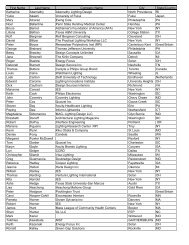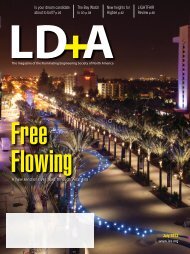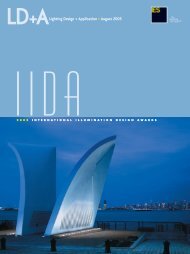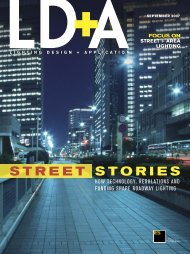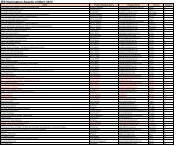light products - Illuminating Engineering Society
light products - Illuminating Engineering Society
light products - Illuminating Engineering Society
Create successful ePaper yourself
Turn your PDF publications into a flip-book with our unique Google optimized e-Paper software.
IMAGE: COURTESY OF CHARLES EHRLICH<br />
C E N T U R Y S E R I E S : P I O N E E R S<br />
Computers and Lighting<br />
After exponential growth in the 1980s and ’90s, has development of<br />
<strong>light</strong>ing design software reached a lull<br />
By Emlyn Altman<br />
Designers and researchers have<br />
been calculating the effects of<br />
<strong>light</strong> for centuries—well<br />
before the use of computer technology.<br />
Many of the formulae and concepts<br />
used by <strong>light</strong>ing design software have<br />
been around since the late 1800s; but<br />
it has only been within the past four<br />
decades (and particularly the ’80s and<br />
’90s) that exponential growth in computer-related<br />
<strong>light</strong>ing design developments<br />
has occurred.<br />
Prior to the advent of computer<br />
aided design, one research study provided<br />
a major impact on <strong>light</strong>ing design<br />
calculations and foreshadowed a capability<br />
of current <strong>light</strong>ing design software.<br />
In 1945, Dr. Perry Moon and<br />
Prof. Domina Spencer submitted a<br />
paper to the IESNA that presented an<br />
“Interflection” method of calculating<br />
<strong>light</strong> for illuminating engineers to predict<br />
brightness and brightness ratios in<br />
interior spaces. Prior to this study,<br />
methods of predicting surface illumination—taking<br />
into account reflected<br />
<strong>light</strong>—were unavailable to <strong>light</strong>ing<br />
designers. Using an integration formula<br />
which considered inter-reflected <strong>light</strong><br />
in rooms of any shape, they calculated<br />
five different <strong>light</strong>ing conditions—indirect,<br />
direct, <strong>light</strong> troughs, diffusing<br />
globes and semi-direct illumination—<br />
and used the results to simulate “synthetic<br />
image” perspective views created<br />
from pieces of cut-out Munsell<br />
paper ironed together, each color corresponding<br />
to a specific reflectance<br />
value (Figure 1 andTable 1).<br />
This research led the way in establishing<br />
a 3-to-1 line-of-sight criterion<br />
for illuminating interior spaces used<br />
December 2005 LD+A 57



